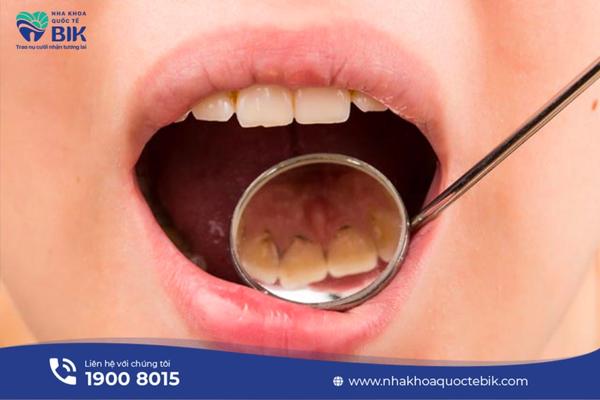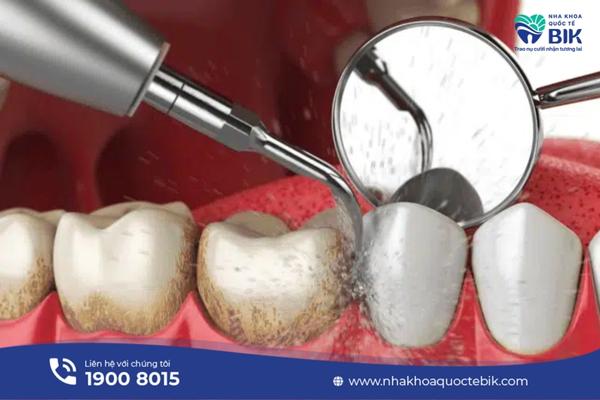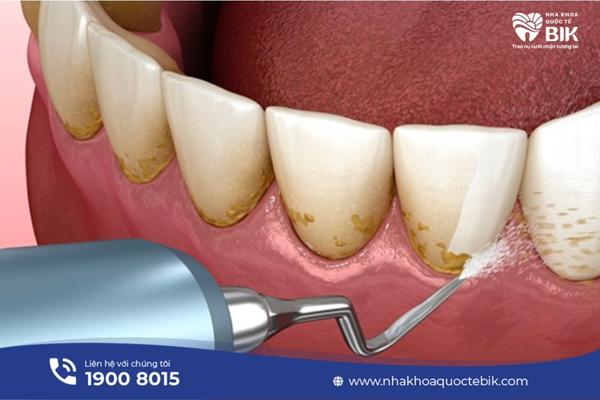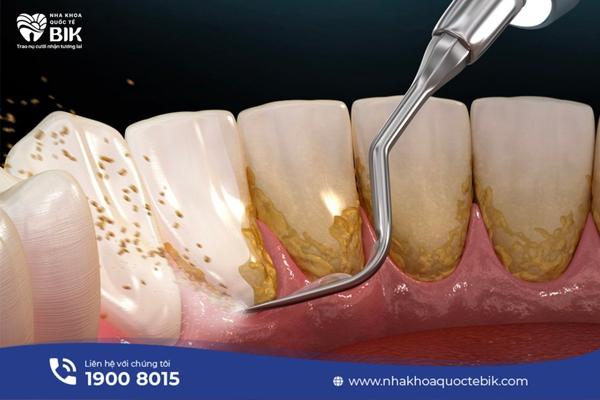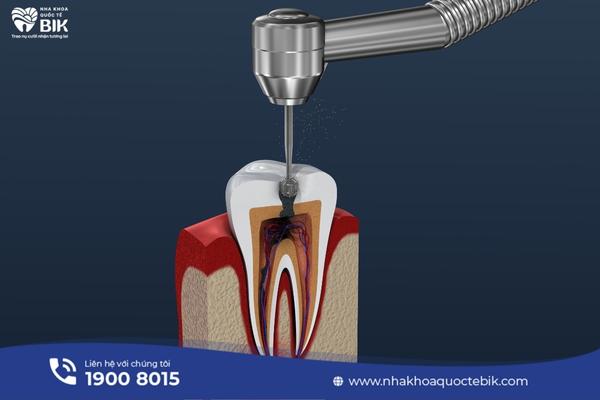Different teeth are a condition in which the teeth do not grow close together but are far apart on the jaw, causing many difficulties when chewing or cleaning teeth. Whether to have braces or porcelain crowns for sparse teeth depends on the needs of time, aesthetics as well as the oral condition of each person. In general, although these two methods have their own advantages and disadvantages, they can effectively overcome the condition of sparse teeth, helping customers to have a standard bite and even, beautiful teeth.

What are the effects of gapped teeth?
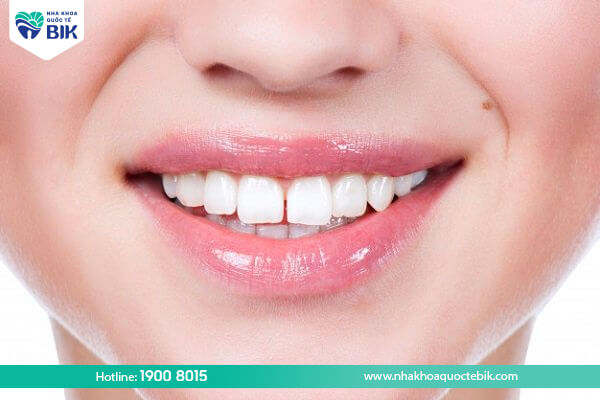
Gap teeth is a condition in which teeth grow far apart on the jaw due to many different causes. Gaps in teeth can be congenital or caused by bad habits such as picking teeth with toothpicks, using dental floss incorrectly, etc.
Gaps in teeth can lead to the following effects:
Cause other oral diseases
Oral hygiene for people with gapped teeth is often difficult because food easily sticks to the teeth after eating. When teeth are not cleaned properly for a long time, it will create conditions for bacteria to grow and cause oral diseases such as gingivitis, tooth decay, periodontitis, etc. In addition, sparse teeth also reduce chewing force, which can gradually lead to temporomandibular joint inflammation as well as some digestive diseases.
Affects aesthetics
Teeth are the part that affects most of the beauty of each person’s face. Not only sparse teeth, but also protruding, receding, yellowing, etc. also make many people lose confidence in daily communication. From there, they miss many opportunities in work and life.
Malocclusion
In case of sparse teeth due to teeth growing in the wrong position, it can lead to misaligned bite. The more misaligned the bite is, the more difficult it will be to eat. The jaw must work at high intensity for a long time, leading to a number of conditions such as jaw pain, temples, headaches, etc.
Learn about braces for spaced teeth
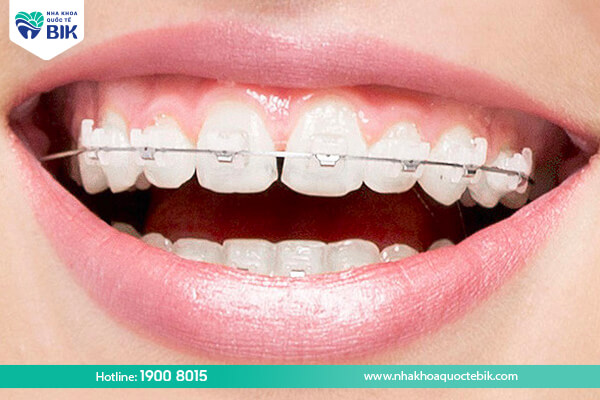
Braces are an orthodontic method that uses specialized tools such as archwires, brackets or braces to apply force to the teeth in a stable and regular manner, helping the teeth return to the desired position on the jaw. Braces effectively correct cases of misaligned teeth such as gaps, overbites, underbites, deep bites, etc.
With each patient’s different oral condition, the doctor will examine and advise on a specific treatment regimen for each person, so all cases of teeth spacing from mild to severe can be treated with orthodontics. After braces, customers will have beautiful, even teeth, perfect bite and no pain.
Currently, there are 2 popular orthodontic methods: braces and clear braces. Each type has its own advantages and disadvantages to suit the needs of many customers, but in general, the final result is to help teeth return to the desired position.
Advantages
– Effectively corrects dental defects such as protruding teeth, underbites, crooked teeth, gaps, misaligned bites, etc., regardless of severity.
– Only affects the enamel surface as well as the tooth root, so real teeth will be preserved to the maximum, the structure and pulp of the tooth will not be affected at all.
– The materials of braces or braces have been tested to be safe and do not affect overall health.
– Customers can choose from a variety of braces methods such as: Metal braces, ceramic braces, Invisalign clear braces, etc. to meet their needs body.
– The results of braces can be maintained for life if the patient follows the doctor’s instructions and performs a suitable oral care regimen.
Disadvantages
With outstanding advantages, braces for sparse teeth still have certain limitations:
– Long treatment time: Depending on the degree of tooth spacing and the age when braces are applied, the time required to get braces results is about 1.5 – 2 years.
– Low aesthetics: In cases where customers are more interested in shortening the time of braces, braces are the optimal choice, but the aesthetics throughout the treatment process are not guaranteed like clear braces Invisalign.
Notes when braces for spaced teeth
In order for the braces process to proceed as planned, patients should visit the dentist for a follow-up visit according to the doctor’s appointment schedule to check the movement of the teeth. At the same time, the doctor can also promptly prevent some other oral diseases during the orthodontic process (if any) such as gingivitis, periodontitis, tooth decay, etc. Avoid prolonged illness that affects health as well as the effectiveness of braces
Usually, the average orthodontic time lasts from 1.5 to 2 years to be able to have beautiful, even teeth with a standard bite. However, the treatment time for each person will be different depending on the specific condition of the spaced teeth as well as the orthodontic method chosen by the customer. Customers can shorten the treatment time by following the doctor’s instructions and practicing good oral care.
Learn about porcelain crowns for spaced teeth
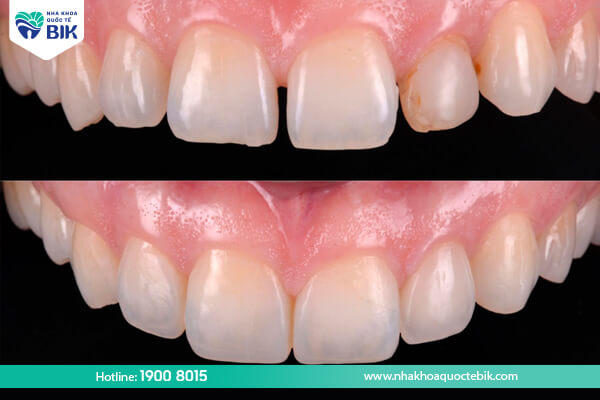
Porcelain crowns are a cosmetic restoration method for teeth, using a porcelain crown placed over missing, damaged or spaced teeth to help restore surface, color as well as chewing function of the tooth. When performing this method, the real tooth will be ground down to a certain ratio so that the porcelain crown can be placed on top. Porcelain crowns help customers own white, even teeth after only about 3 – 5 days.
Advantages
– Restores defects on teeth such as buck teeth, protruding teeth, chipped teeth, broken teeth, cavities, or even yellowing and discoloration that cannot be whitened.
– Restores aesthetics in both shape and color of teeth and restores up to 99% of chewing ability.
– Fast implementation time, suitable for many customers.
– A variety of porcelain crowns with different prices for customers to choose according to their preferences and needs.
Disadvantages
– Grinding porcelain teeth will affect the enamel of real teeth, which can cause tooth sensitivity.
– Not suitable for people with sensitive skin, many oral diseases or severe misaligned bites.
– Although they are highly durable, in reality porcelain teeth are still just fake teeth, so their lifespan cannot last forever.
Notes when covering sparse teeth with porcelain
The process of covering porcelain teeth must go through the step of grinding the tooth stump, so if not performed by a highly skilled doctor, it is very likely to invade the tooth tissue, causing tooth sensitivity and affecting the tooth pulp. If the pulp is affected and not detected in time, it can lead to other serious consequences such as pulpitis, pulp death, etc.
Not only that, when the enamel ratio is not properly ground, it will create conditions for bacteria to accumulate and cause bad breath, tooth decay, pulpitis, etc. because the porcelain crown and the contact surface with the real tooth are not completely tight.
Depending on the dental address, the doctor’s skills as well as the type of porcelain crown the customer chooses, the average lifespan of a porcelain crown can be from 7 to 20 years.
Should I get braces or porcelain crowns for spaced teeth?
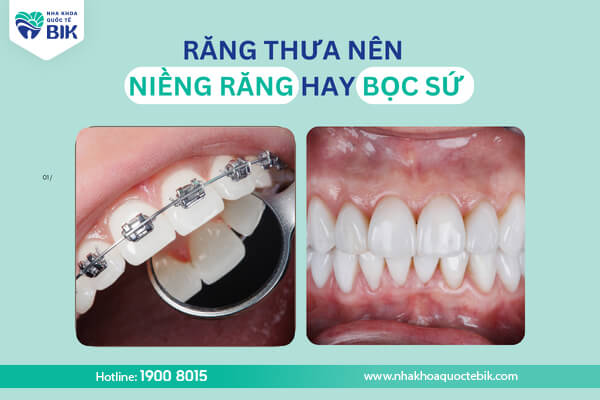
In general, both braces and porcelain crowns effectively help to fix spaced teeth. Patients can rely on the following criteria to make the right choice:
In terms of aesthetics
In cases where teeth are severely spaced or crooked, braces are more suitable than porcelain crowns, even if they are high-end porcelain restorations. Braces help teeth move to the correct position so that they are straight, tight and more even.
In terms of durability
The longest lifespan of porcelain crowns is only 25 years, while the effectiveness of braces can be maintained for a long time. life because it still uses real teeth. In addition, the braces process does not affect the structure or pulp of the tooth, so the tooth is still strong.
About flexibility
The porcelain crown method is only highly effective when the teeth are slightly protruding. In cases where the teeth are widely spaced, porcelain crowns cannot be performed because too much tooth grinding is required. If the enamel is ground beyond the allowable ratio, it is easy to affect the tooth pulp, making it sensitive to external influences.
About the impact on teeth
Because there is no need to grind the tooth stump, braces for sparse teeth are considered the most optimal solution when considering the criteria of preserving real teeth.
About orthodontic time
This is the only factor that porcelain crowns for sparse teeth have an advantage over. The production time for porcelain crowns is only about 3 – 5 days and you only need to see the doctor about 2-3 times in the total treatment course. With braces for sparse teeth, after about 1-2 years, the teeth will achieve the desired balance.
Why should you choose BIK International Dental Clinic for braces for sparse teeth?

BIK International Dental Clinic confidently accompanies thousands of domestic and foreign customers on their journey to find a new smile with the method of braces for spaced teeth thanks to meeting the following criteria:
Highly skilled doctors
When choosing braces for spaced teeth at BIK International Dental Clinic, customers will be examined, consulted and given a specific treatment plan for each person. Doctors working at BIK International Dental Clinic are all trained from basic to advanced in the field of maxillofacial surgery in general as well as braces – orthodontics in particular.
With more than 10 years of experience in the profession, doctors ensure to minimize the treatment time of customers by providing and implementing an accurate roadmap. Save a lot of time and money while still achieving the best orthodontic results.
Equipped with modern machinery and technology
All BIK International Dental facilities are equipped with modern machinery to support doctors in the process of braces, minimizing pain for customers.
In addition, BIK currently provides Invisalign clear braces service using the most advanced orthodontic technology today. This method helps spaced teeth become even and standard after about 2 years and ensures absolute aesthetics throughout the treatment process.
International standard braces process
The process of braces for spaced teeth from examination, consultation to treatment at BIK International Dental Clinic is carried out step by step according to international standards. In addition, BIK also strictly follows the regulations of the Ministry of Health on sterilization and disinfection to avoid cross-infection between patients.
So whether to have braces or porcelain crowns for spaced teeth depends largely on the needs and oral condition of each person. In general, both of these methods can bring about even, beautiful teeth, effectively restoring aesthetics as well as chewing ability. However, to know exactly whether to choose braces or porcelain crowns for sparse teeth, customers should go to a reputable dental facility to be examined and consulted by a specialist.


